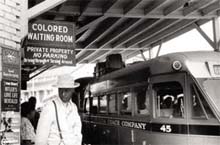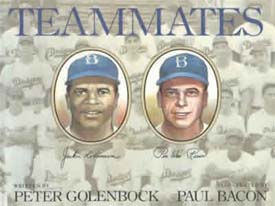

National Standards English Language Arts 1. Students read a wide range of print and non-print texts to build an understanding of texts, of themselves, and of the cultures of the United States and the world; to acquire new information; to respond to the needs and demands of society and the workplace; and for personal fulfillment. Among these texts are fiction and nonfiction, classic and contemporary works. 3. Students apply a wide range of strategies to comprehend, interpret, evaluate, and appreciate texts. They draw on their prior experience, their interactions with other readers and writers, their knowledge of word meaning and of other texts, their word identification strategies, and their understanding of textual features (e.g., sound-letter correspondence, sentence structure, context, graphics). 7. Students conduct research on issues and interests by generating ideas and questions, and by posing problems. They gather, evaluate, and synthesize data from a variety of sources (e.g., print and non-print texts, artifacts, people) to communicate their discoveries in ways that suit their purpose and audience. Samples from PowerPoint, The purpose of this activity is to show the incredible courage of Jackie Robinson and people like him who helped break through racial barriers. Please talk to your children! Students in Mrs. Waugaman's classes will be reading Teammates by Peter Golenbock next week. This is a nonfiction book about Jackie Robinson and his friendship with fellow Dodger Pee Wee Reese. In preparation for this activity, we will be building the students' background knowledge by viewing a presentation and discussing the issue of segregation in the U.S. during Jackie Robinson's lifetime. It would be very helpful for your child if you, or any members of your family would share any personal remembrances of segregation in the '30s, '40s, or '50s. Children have many questions about this period of American history. They wonder about the Ku Klux Klan, who they were, why they were so racist. They are concerned about injustice that was prevalent during that era. "Why couldn't black kids and white kids play together? Could they walk on the same side of the street? They went to different schools? They couldn't eat together? Couldn't even sit together on the same bus?"
At the bus station in Durham, North Carolina, Jack Delano, photographer, 1940 (courtesy of the Library of Congress.)
Primary resources from a variety of Web sites were used to create a PowerPoint presentation about Jackie Robinson and segregation in the 1940s. The photograph in this slide came from the American Memory Collections at the Library of Congress. Marion Post Wolcott photographed it in Memphis, Tennessee, in 1939. |
How many students sit silently in the classroom with no understanding of the events behind a story because they do not bring prior knowledge with them from conversations or experiences at home? What are some strategies teachers can use to introduce information crucial to comprehension? What role can technology play in assisting teachers with presenting prior knowledge in an engaging way? Kathleen Waugaman, a fourth grade Safety Net teacher, took advantage of several technology tools to aid her students in understanding the book Teammates by Peter Golenbock. Teammates is a story about Jackie Robinson and his friendship with Pee Wee Reese, both Brooklyn Dodgers, in an era of segregation. Waugaman employed the Big6 framework to design this powerful lesson that engaged her low-level reading students in learning about the '30s, '40s, and '50s. (See the Lesson Plan sidebar on building prior knowledge.) To begin the lesson, Waugaman wanted each student
to identify with the notion of what it would be like to be a baseball
player. Students
went to predetermined Web sites to view baseball cards and the information
each contained. This was the first step in building a foundation
of knowledge. Then, digital photographs were taken of each student.
They posed in baseball stances with a ball or bat. The pictures were
inserted into a word processing document and a border was placed
around each picture. These "baseball cards" were hung on
the bulletin board for all to enjoy. To inform parents about this activity, Waugamann published an article in her Safety Net newsletter. Her goal was to include parents in the learning process by having them share their knowledge with their children. Knowledge Gained Prepared with prior knowledge, students began reading and discussing Teammates with great enthusiasm. They knew the vocabulary and the context of the story in history. They had confidence to ask relevant questions. Kathy Waugaman summed up the experience as follows: "If you had told me that I would be using technology with my students as a tool a few weeks ago, I would have laughed. Now I am a believer!" Web Sites Jackie Robinson and Other Baseball Highlights, 1860s-1960s (by Popular Demand) Explore a wide range of original source materials such as newspaper articles, letters, and photographs that tell the story of Jackie Robinson and the history of baseball from the 1860s to the 1960s. The Robinson story is told in five chapters: Drawing the Color Line, Barnstorming and the Negro League, Breaking the Color Line, Robinson as a Dodger, and Robinson's Later Career. This unique collection draws from all resources available at the Library of Congress. Jackie Robinson was a strong civil rights advocate both on and off the field. The National Archives and Records Administration holds numerous records that pertain to his quest for equality, including letters and telegrams to Presidents Eisenhower, Kennedy, and Johnson. In one telegram to President Kennedy, Robinson implores him to make every effort to provide federal protection for Dr. Martin Luther King and his contingent who are attending the funeral of Medgar Evers in Mississippi. If you are looking for a one-page biography of Jackie Robinson along with a few of his quotes, this is a good site to visit. In addition to Jackie Robinson, the Amateur Athletic Foundation honors four other men who crossed the color barrier of Major League Baseball: Larry Doby, Henry Thompson, Williard Brown, and Dan Bankhead. Jackie Robinson Historical Timeline When students click on the images of the timeline, a pop-up window appears with relevant facts and photos. It is another great starting point to spark student interest in reading about the first black man to play in the major leagues. In fact, he starred in his film biography The Jackie Robinson Story in 1950. Jim Crow ruled the South from about 1890 to well into the 1960s. Remembering Jim Crow is a documentary funded by the National Endowment for the Humanities that examines this era in depth. This companion site contains a wealth of information including several slide shows that describe visually the injustices of the past plus excerpts from interviews of individuals who lived and experienced or observed repression. In addition, there are samples of the Jim Crow laws that were part of everyday life in the South. Social studies teachers will be able to supplement textbooks with lots of rich content from this site. |
Lesson Plan
Building Prior Knowledge Unit Context: Reading, comprehension Content Objectives: Responding to text Big6 Skills 1. Task: Skill Level: What is segregation? Concept Level: What was the social ramification and impact of hiring a black baseball player, Jackie Robinson, in the Major Leagues in the 1940s? Application Level: What role did Dodger shortstop Pee Wee Reese play in easing the process? Activities: Preview the PowerPoint presentation to enhance prior knowledge, find facts contributing to the social climate in the U.S. during the 1940s—specifically, segregation. Find facts about both the black and the white baseball leagues. 2. Info Seeking: Web sites, Harcourt/Brace fourth grade anthology, biographies 3. Location: Web sites (See article and sidebar.) Activities: Go to specific bookmarks to locate information, visit the resource room and library. 4. Information Use: Compare/contrast conditions of black and white baseball players in the 1940s. Activity: Create a Venn diagram to compare both leagues. 5. Synthesis: Produce a PowerPoint presentation and a Word document that demonstrates a deeper understanding of the story Teammates by Peter Golenbock. 6. Evaluation Rubric 4 – Demonstrates excellent understanding of the societal implications of the first black man in white baseball leagues that is fully supported with evidence from the text, explanations, and interpretations. 3 – Demonstrates good understanding of the changes in society and the world of sports with the hiring of the first black baseball player in white leagues. Ideas are supported with adequate evidence from the text or explanations. 2 – Shows some understanding of the connection between the first black man hired to play on a white team and its impact on society, but with few ideas developed. 1 – Brief response, minimal understanding of the impact of the first black baseball player on a white team.
Front cover of Jackie Robinson comic book, c1951. Courtesy of The Library of Congress |
||
|
||||
Updated March 14,2015
© 1996 - 2015 Linda C. Joseph
All Rights Reserved
All CyberBee Graphics are Trademarked
Graphics by
Darlene Vanasco/Creative Director
Erika Taguchi/Designer & Illustrator
Hosting Provided by Iwaynet



